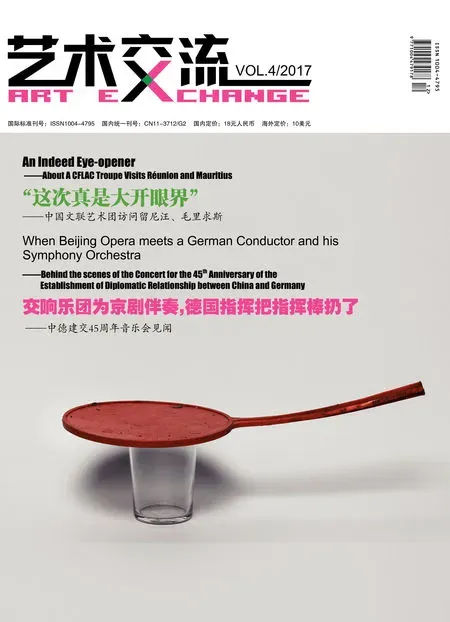《乡愁》细读
12月14日,中国著名诗人、文学家、散文家余光中在台湾高雄病逝,享寿九十。余光中1928年10月21日生于南京,1949年随父母迁居香港,次年赴台。他从事文学创作超过半个世纪,作品驰誉海内外,著有新诗、散文、评论、翻译等,一首《乡愁》在全球华人圈内引发强烈共鸣。时事评论员黄智贤说:“从小我们都是读余光中先生的《乡愁》长大的。那时候不懂乡愁,只能从朋友的父母对大陆的怀想,想象那种无尽的思念。直到自己外出读书,才读懂先生心中的痛。”——今日再读余光中,不能不提及《乡愁》。
Y U Kwang-Chung, Chinese famous poet, litterateur and prosaist died at age of 90 in Kaohsiung City on 14, December. Born on 21, October, 1928 in Nanjing, he moved to Hong Kong with his parents in 1949 and Taiwan the next year. YU Kwang-Chung has engaged in literary creation for more than half a century with renowned works home and abroad, including poetry, prose, criticism,translation, editing etc. His PoemNostalgiahas caused a strong resonance in the global Chinese circle. HUANG Zhixian, a news commentator, said that we grew up by reading theNostalgiawritten by YU Kwang-Chung. We did not understand it at that time, but only imagine the endless thoughts of the mainland from our friends’ parents and could not fully acknowledge the pain of Mr. YU until we left home for studying abroad. --- Recalling YU Kwang-Chung via theNostalgia.

余光中 YU Kwang-chung
在台湾文学中,思乡更是一个长久不衰的、令人心动的主题。这是因为自1895年中日甲午战争后,台湾被割让给日本长达50年。1945年日本战败,台湾人民回到祖国怀抱。然而,好景不长,1949年国民党政权败退到台湾,台湾又被硬性与大陆隔开。从此台湾人民有家难归,亲情难叙,只好望洋兴叹。正是这样一种背景下,台湾文学中出现了大量的具象化了的乡愁。这种文化乡愁,集中表现出情系大陆、思念故园的强烈的乡情与亲情意识。
从审美心理学上说,乡愁属于一种缺陷美。根据格式塔心理学理论,这种非常态的情感,在力的结构图式上呈现出的是一种不对称的“形”,它在读者心理上诱发出一种强烈的“完形”的审美冲动,与对称、和谐的“形”相比较,这种由非常态情感生成的不对称的“形”具有更大的审美张力。正因如此,乡愁成为了中国诗歌史上历久不衰的主题。无数文人、骚客,都曾和着泪血写下了许多以“缺”求“全”的哀婉动人的诗篇。
余光中的《乡愁》,一方面沿用了中国传统的乡愁母题,但是另一方面,诗人又站在了当代的人文高度,赋予了传统母题时代的、个体的精神内涵。
余光中生于大陆,长于大陆,后来去台,但他深深眷恋着祖国大陆,他曾在《五陵少年》一诗中写道:“我的水系中有一条黄河支流…… 我的怒中有燧人氏,泪中有大禹/我的耳中有涿鹿的鼓声。”他还说过,中国大陆是“所有母亲的母亲”“所有父亲的父亲”“所有祖先的摇篮”。诗人眷恋大陆、思念故乡情结之浓重,是可以想见的。但是就《乡愁》一诗的写作而言,光是有一股强烈的思乡情绪还不足以成就一首好诗,重要的是把这种情思转化为意象,这才是对一个诗人创造能力的检验。余光中无疑是位有才华、有独创性的诗人,他处理起这样的题材举重若轻。他从自己的生活经历中选择与提炼出“邮票”“船票”“坟墓”“海峡”这四个中心意象,构成《乡愁》一诗的骨架。
头两个小节,用来自生活的“小小的邮票”“窄窄的船票”作为“乡愁”的表征。由于背井离乡,只能用贴着邮票的书信沟通信息;由于隔山隔水,难得有买船票相聚的机会。这里的邮票与船票暗示了空间的阻隔。
第三小节的坟墓代表着死亡。死亡是生命活动最具有深刻意义的时刻,经得起死亡检验的东西,才是生命中最有价值的东西。把“乡愁”比成坟墓,足以表明乡愁之强烈,有一种永诀般的震撼人心。
最后一节是点睛之笔。造成乡愁难解的最根本的原因,是海峡把祖国分成两个世界,但是政治上的人为阻隔,比千山万水的阻隔还要难于逾越。妙处又在于,面对这种难于逾越的巨大阻隔,诗人却用了“一湾浅浅的海峡”轻轻带过,这是我国古代思乡诗的典型的含而不露、哀而不怨的风格,在有意淡化的意象描绘中蕴含着深郁的情愫,在平静的叙述背后涌动着诗人的心潮。
“邮票”“船票”“坟墓”“海峡”,这四个意象本是各自独立,互不相关的,诗人又是如何把它们组织到一起的呢?
以时间为序,把最能体现每一时间段诗人情绪的中心意象凸显出来,是《乡愁》一诗意象组合的基本手法。一般说来,诗人情感的触发,很大程度上,是来自回顾人生历程时升华起的时间意识,而身为游子的诗人对于时间尤其具有特殊的敏感。就《乡愁》这首诗而言,诗人是遵循自然的时序而组织意象的。具体说,就是按照“小时候”“长大后”“后来”“现在”这样一个人生成长的自然顺序展开的。这种时间的展开方式,由于诗人的思想感情的脉络与现实的时序相一致,因而时间线索清晰,写来朴实、真切,并易于为读者接受。
复沓的巧妙运用,是这首诗的意象组合的又一手法。复沓是我国古代诗歌,特别是民歌经常使用的一种结构方式和表情手段。《诗经》中的不少诗篇节与节之间结构相似,词语上也不过只有两三个字的变化,但是通过反复咏叹,可以获得意义的集中以及节奏的美感。《乡愁》一诗,全诗共四节,以时间为序,每一节安排一个中心意象,时间词与中心意象固然不同,但是每节都运用“乡愁是……”与“我在这头”“……在那头”的句式,再加上“一枚小小的……”“一张窄窄的……”“一方矮矮的……”“一湾浅浅的……”这结构相同的数量词及叠词在同一位置的复现,这便构成了节与节之间的对称与均齐。这种复沓式的结构方式,有助于渲染一种浓烈的气氛,造成意义的集中,强化诗人所要着力宣泄的情感。此外复沓还可以加强节奏的美感,使音韵更为和谐。从起源来说,诗与乐、舞有着天然的联系。复沓便是诗应和着乐、舞回旋往复的节奏的一种形式。复沓借助于结构相同和若干不变的词语,把全诗组织为一个整体,其相同及相近的音调造成的声音的回环,给读者一种圆转自如的声音上的美感。《乡愁》一诗,之所以能被谱上曲,广泛传唱,这也是个重要原因。
乡愁
余光中
小时候
乡愁是一枚小小的邮票
我在这头
母亲在那头
长大后
乡愁是一张窄窄的船票
我在这头
新娘在那头
后来啊
乡愁是一方矮矮的坟墓
我在外头
母亲在里头
而现在
乡愁是一湾浅浅的海峡
我在这头
大陆在那头
The homesickness has been a lasting and exciting theme in Taiwan literature. It is because Taiwan has been clocked to Japan for half a century since the Sino-Japanese War in 1895. People in Taiwan returned to the motherland since the defeat of Japan in 1945. However, Taiwan has been forced to separate from the mainland as the Kuomintang retreated to the island in 1949. Since then, Taiwan people lost their homes and beloved ones in the family across the strait. In this context,there emerged a large number of representational homesickness in Taiwan literature, which was centrally reflected through the strong nostalgia and family bond consciousness to the continent and their homelands.
From the aesthetic psychology, nostalgia belongs to a type of defect beauty. This state of emotion, according to Gestalt psychology, presents an asymmetrical "shape" on the structural schema of the force, inducing a strong "perfection" aesthetic impulse in the mind of readers. Compared with the symmetrical and harmonious "shape", the asymmetrical "shape", generated by the very state of emotion, possesses a greater aesthetic tension.It is because of this that nostalgia became the eternal theme in the Chinese history of poetry, as so many writers and poets had created many pathetic poems of missing and complete with tears and blood.
TheNostalgiaof YU Kwang-Chung adheres to the traditional homesickness-and-mother-theme in China, while the poet, on the other hand, stands at the height of contemporary humanity,giving the spiritual connotation to the traditional mother-theme age and individualism.
He also said once, the Chinese mainland is the mother of all mothers, father of all fathers and cradle of all ancestors. The poet's attachment to the mainland and the love of his hometown is so strong and unimaginably immense. However, concerning the creation of theNostalgia, a pure and strong sentiment of homesickness is not enough to achieve a great poem, more importantly, one should turn the feeling into image, which is the true test of a poet’s creative ability. Undoubtedly a talented and original poet, YU Kwang-Chung handles such complicated themes with so much ease by choosing and extracting four central images as stamp, traveling ticket, graveyard and strait from his own life experience to constitute the skeleton ofNostalgia.
The stamp and traveling ticket were used in the first two stanzas as symbols of nostalgia. As a result of exile from his homeland,one can only communicate information with postage stamps. And due to the long distance, the chance of reunion with a purchased traveling ticket is rare. Both the stamp and traveling ticket imply the barrier of space.
The graveyard in the third stanza represents death, as it is the most profound moment of life, and what can stands the test of death is the most valuable thing in life. It is strong enough to demonstrate the strong feeling of homesickness by comparing nostalgia with as grave, a heart-wrenching image to everyone.
The last stanza is the very essence. The most fundamental reason for the homesickness is that the Strait divides the motherland into two worlds, the artificial barrier in politics is much more difficult to conquer than hills and streams. The subtlety lies in that facing such a great barrier, the poet uses such easy words as "shallow Strait", in a typical style of the ancient homesick poetry in China,unrevealed connotation while mourning without complaint,containing deep feelings in the depiction of ambiguous images and the poet’s beating heart behind the calm narration.
With the four images being independent and unrelated, how did the poet connect the stamp, traveling ticket, the graveyard and strait together?
By the order of time, the central image mostly embodying the poet's emotion in every time period is highlighted. It is the basic technique of the image combination ofNostalgia. Generally speaking, the trigger of the poet's emotion, to a large extent,is from the sense of time rising in a review of the course of life,especially as a traveling poet who is especially sensitive to time.In terms of the poemNostalgia, the poet organized the image in accordance with the time sequence of nature. In particular, it is in the natural order of life to grow up according to the "childhood","after grow-up", "later" and "now". The development of this time is consistent with the realistic time sequence of the poet's thoughts and feelings, with clear time clue, simple and real, the poem is much acceptable for readers.
The skillful use of refrains is another technique of image combination in this poem. It is a commonly-used structure and expressive means in ancient Chinese poetry, especially folk songs.Many poems inBook of Songsare similar in structure between parts. With changes in only two or three words, however, we can get the sense of meaning and the beauty of rhythm by chanting repeatedly. With only four stanzas by sequence of time in the poem ofNostalgia, a central image in each one, words denoting time and central images are indeed different, but each stanza uses"Nostalgia seemed…" and "Here am I, And there…" sentence structure, together with the repetition of the same quantifier and reduplication in the same position as A small, "Anarrow…","A short" and "A shallow"…, constituting the symmetry and uniformity between the sections. This refrain structure is conducive to rendering a strong atmosphere, concentrating a sense of meaning and strengthening the emotion that the poet was committed to revealing. In addition, it can also improve the beauty of rhythm and make the phonology more harmonious.Poetry has a natural connection with music and dance in terms of origin and the refrain is a form of rhythm echoing the music and dance. With the same structure and some invariant words, the refrain organizes the poem as a whole structure with echo of the voice caused by the same and similar tones giving readers a sense of beauty in a rounded voice. This is also the crucial reason that the poem ofNostalgiahas been composed into music and passed on widely.
Nostalgia
by YU Kwang-Chung
When I was a child,
Nostalgia seemed a small stamp
Here am I
And there… my mother
Then I was a grown-up
Nostalgia became a narrow traveling ticket
Here am I
And there… my bride.
During the later years,
Nostalgia turned to be a short graveyard
Here am I
And inside… my mother
And now at present
Nostalgia looms large to be a shallow channel
Here am I
And there… my mainland

